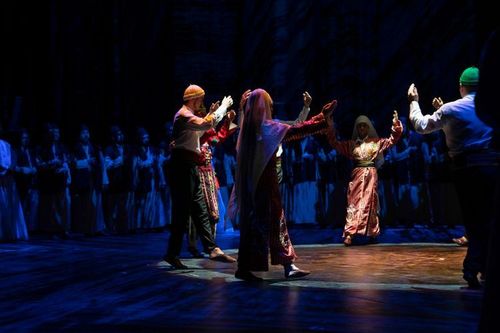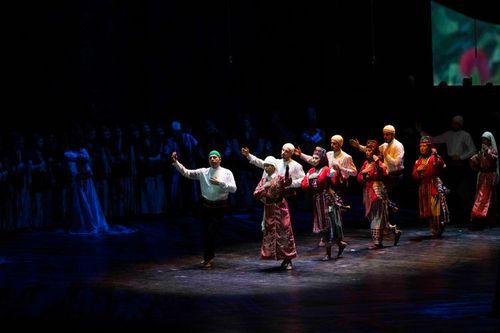Semah
The Bektashi Order, one of the four main pillars of Anatolian spirituality, traces its origins to the teachings of Hünkâr Hacı Bektâş Velî, a revered Sufi master of the 13th century and a spiritual descendant of the Khorasani mystics. The Bektashi path, enriched by the nefes (sacred utterances) and wisdom of its early saints, evolved into one of the most influential Sufi traditions across Anatolia, resonating not only among the common people but also within the Ottoman military and administrative circles.
At the heart of Bektashi spiritual practice lies the Semah—a ritual form of dhikr (remembrance of God) that holds a significant place in the order’s ceremonies. Deeply rooted in the “Four Gates and Forty Stations” (Dört Kapı Kırk Makam) framework of spiritual progression, semah symbolizes the aspirant’s journey of inner purification and nearness to the Divine. It is far more than a rhythmic movement; it is a representation of the soul’s transformation through love, remembrance, and humility.
Semah is performed during the Âyin-i Jam, the communal worship ceremony of the Bektashi tradition. During this sacred gathering, dervishes—accompanied by the zâkirs, musicians responsible for spiritual melodies—engage in a choreographed dhikr that combines music, poetry, and movement. The ritual involves spinning and swaying in harmony with sacred nefesler (devotional songs) played on the bağlama, a long-necked lute. Throughout the ritual, supplications called gülbank are recited, invoking divine presence and blessings upon the gathering.
The form and even the name of this practice vary across Anatolia depending on regional culture and dialect. Thus, the semah is also known as samah, semağ, zamah, or zemah in different localities. This linguistic and stylistic diversity attests to the rich cultural integration and broad geographic reach of the Bektashi tradition.
Today, this age-old ritual of remembrance and spiritual expression is preserved and performed with authenticity by the Istanbul Sufi Ceremonies Ensemble, under the direction of Hüseyin Cem Durak. Their performances not only maintain the traditional form but also open a window into the profound aesthetic and spiritual dimensions of Anatolian Sufism—connecting modern audiences to a centuries-old heritage of love, wisdom, and unity.

